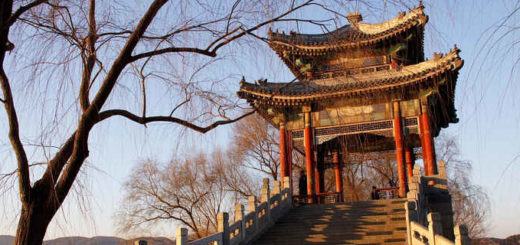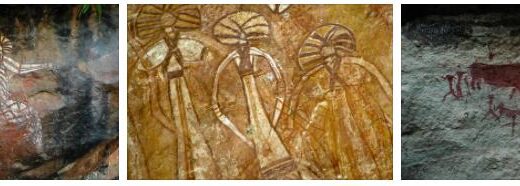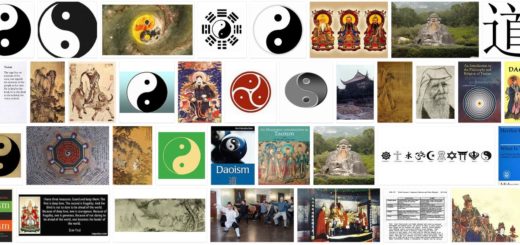Huang Shan Mountain Landscape (World Heritage)
The Huang Shan, the Yellow Mountain, is considered the most beautiful mountain in China, which has played a special role in literature and art for centuries. The entire mountainous landscape in the south of Anhui is very graceful with its steep cliffs, gnarled trees and so-called seas of clouds. The lotus blossom peak (1849 m) is the highest of the 72 peaks.
Huang Shan Mountainous Landscape: Facts
| Official title: | Huang Shan mountain landscape |
| Cultural and natural monument: | Landscape with the “loveliest mountains in China”, protected since 1982, area of 154 km²; Venerated in more than 20,000 poems and essays during the Tang and Qing dynasties, the symbol of the classical Chinese landscape, 747 names given during the Tang dynasty, 64 temples built during the Yuan dynasty (1271-1368) |
| Continent: | Asia |
| Country: | China |
| Location: | in the south of Anhui, southwest of Shanghai and Nanjing |
| Appointment: | 1990 |
| Meaning: | a mountain landscape of particular charm and a rich cultural past |
| Flora and fauna: | Forest below 800 m mainly with Pinus massoniana, in higher altitudes Pinus huangshanensis, but also occurrences of Cyclohalanopsis glauca, Ginkgo biloba and Quercus stewardii; 1450 native plant species known, rare species such as Pseudotsuga gaussenii and Manglietia fordiana, species threatened with extinction such as Orobonche coerulescens, Inula iinariaefolia, Tillium tsochonoskii, Dendrobium nobile and Captis chinensis; 48 species of mammals such as clouded leopards, sika deer, serau, rhesus monkey, Indian civet, Chinese sun badger; 170 bird species such as the black-billed stork, as well as 38 reptile, 20 amphibian and 24 fish species |
Mountains of poets, as if painted with ink
Although the peaks of Huang Shan are not alpine in size, their bizarre shapes, mostly shrouded in “mystical fog”, have inspired Chinese painters and poets for centuries. In the Middle Kingdom he is reverently called “the first among the mountains of China”. It is neither one of the Daoists ‘»Five Mythical Mountains« nor one of the Buddhists’ »Four Sacred Mountains«, which are regarded as the residences of the gods and important religious pilgrimage sites.
However, according to politicsezine, no mountains in China can do without a legend. The name of the massif, which translated means “yellow mountains”, is derived from Huangdi, the “yellow emperor” of the past. It is said that he once collected herbs and roots here and then wrote the first medical work of the Middle Kingdom, the “Huangdi Neijing”.
For centuries, poets, painters and scholars have sought out the “Yellow Mountains” to escape the hustle and bustle of Chinese cities, to find themselves in the solitude of the mountains and to be artistically inspired. Poems by hikers who seek contemplation in the seclusion of the mountains can already be found in Chinese literature at a time when a trip to the mountains in Europe was not yet attractive and perceived as threatening. In the 8th century, a good millennium before the advent of romantic natural poetry in Europe, the famous Chinese poet Li Bai wrote: “If someone asks me why I live in the bluish mountains. Well, so I smile happily, but I don’t say a word. Blossoms float down the water into the dawning distance. The world is different here, not human space. ”
“Mountains and water” – “Shan Shui” – developed into one of the most important genres of Chinese art. In the bizarre, steeply towering rocks, lapped by torrents and steaming waterfalls, the Chinese saw embodied the polar elemental forces yin and yang. The active male power Yang is reflected in the hardness of the rock, the passive female Yin in the water and in the clouds. According to Chinese beliefs, neither of the two forces is superior to the other; only their harmonious interplay brings the world into balance.
In a mountain region, the peaks of which appear to have been dabbed with an ink brush, the Chinese ideal of nature seems to have become a reality. The Huang Shan mountain range comprises 72 peaks and today attracts numerous tourists from home and abroad. Centuries-old steps carved directly into the rock and meanwhile also a cable car lead up to the “Cool Terrace” on the 1690 meter high Lion’s Summit, where the early risers gather every morning to witness an incomparable spectacle of nature. If the gods are kind to them, the seemingly endless sea of clouds at their feet slowly turns from a pale pink to a radiant orange from the east. The surrounding peaks tower up like golden islands.
From the Löwenkipfel a path leads down into the valley over steep stone stairs, narrow ridges, past craggy rock faces with gnarled pines, waterfalls and through deep gorges. After the day’s hike from the summit down into the valley, some hikers relax in the hot thermal springs that arise at the foot of the Huang Shan and hope that the romantic experience of nature will not be clouded by sore muscles the next day. And some remember the so-called “Cloud Ladder of the Hundred Steps” and the famous “Welcome Pine”, a bizarre, thousand-year-old tree that leans dramatically over the abyss. He became immortal through his depiction in the monumental painting,



